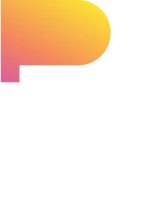Storytelling has evolved from a timeless art to a critical strategy for today’s brands. It’s not merely about assembling a narrative; it’s about deeply embedding your values, mission, and vision within stories that resonate profoundly with your audience, converting passive listeners into engaged advocates. In this digital era, video has emerged as a potent facet of brand storytelling, magnifying its impact and reach, allowing brands to not only tell their stories but truly bring them to life. Let’s uncover the dynamics of video content making and its integral role in enhancing brand storytelling.
What is brand storytelling?
At its core, brand storytelling is communicating in a way that aligns your business with the emotional and psychological needs of your target market. It’s a strategic art form that elevates mundane facts into compelling narratives, helping consumers see your brand not just as a provider of goods or services but as a pivotal part of their own stories.
Telling your brand story is also about presenting your brand in a way that’s not only heard but also felt. Effective narratives built around the brand go deeper into the brand’s essence and how it can connect with the audience to create a bond built on trust and emotion. When your stories reflect the dreams and challenges of your audience, you’re not just selling a product—you’re offering a better way of life that they can emotionally invest in. This is how memorable brands are built—not through transactions but through meaningful relationships nurtured by shared stories.
What are the various types of video storytelling?
As we explore different types of video storytelling, we will uncover diverse styles of video creation that each serve a specific purpose. From customer testimonials that offer credibility to documentary-style deep dives that showcase your brand’s journey or even animated explainer videos that simplify complex concepts, each type serves a unique purpose. Utilizing various types of video storytelling ensures that your brand can connect with different segments of your audience in the most impactful way possible. Here’s a breakdown of the primary types of video storytelling:
Explainer Videos: These videos are precise and clear, sometimes animated, and aimed at breaking down your product or idea into bite-sized, digestible nuggets, ideal for grabbing attention on landing pages or social feeds.
Testimonial Videos: This is where you let your customers do the talking. Real stories from real people pack a punch of credibility and trust, showcasing satisfied clients and their genuine endorsements. They’re gold for social proof on your website or during campaigns. You can also turn your employees into brand ambassadors by creating endorsement videos that showcase their genuine support for your brand, adding a layer of authenticity to your messaging.
Brand Documentary Videos: Think of these as the soulful storytellers of your brand’s journey. They bring out the roots of your business, highlighting your ethos, culture, and the people behind the scenes. It’s about building a narrative that connects on an emotional level, ideal for augmenting bonds with your audience.
How-To Videos: These tutorials are all about utility, teaching viewers exactly how to get the most out of your offerings. They position your brand as both an expert and a helper, making them indispensable for fostering trust and authority.
Product Videos: Whether demonstrating a product in action or highlighting its features, these videos are crucial for making your product stand out in a crowded market. They play a key role in influencing purchasing decisions, particularly on e-commerce platforms. It’s essential that these videos are well-produced to effectively capture attention and drive sales.
Animated Storytelling: In lieu of live-action filming, these videos leverage an animation approach, using illustrated characters or motion graphics to engage the audience. They demystify complexity in a visually appealing and straightforward manner.
Interactive Videos: Interactive videos can feature clickable links or buttons, enabling various interactions like CTAs, answering quiz questions, or choosing a character’s journey. They enhance the credibility of their experience with your brand, making it more engaging and personalized.
Live Streaming: Live streaming captures the essence of the moment in its most authentic form—unfiltered and unedited. Whether it’s broadcasting an event, having an informal chat, or giving a BTS (behind-the-scenes) look, live streams deliver a level of authenticity and immediacy that’s unmatched. This real-time connection makes viewers feel as though they are right there alongside you, experiencing every moment as it unfolds.
Why is brand storytelling important?
The importance of telling our stories is paramount in brand marketing today. Without storytelling, brands would be entities devoid of emotions with an inability to hook their customers, who are humans and have a constant need to connect.
Content is available today across multiple touch points throughout the consumer journey, with users increasingly seeking immersive experiences. The power of video storytelling uniquely combines visual and auditory stimuli that powerfully evoke emotions and drive association—far more effectively than text or static images. In the new-age marketing game, innovative strategies such as interactive storytelling through CGI (computer-generated graphics) and AR/VR (augmented and virtual reality) are gaining popularity.
How to use brand storytelling in marketing
To effectively use brand storytelling in marketing, think of it less as selling and more as inviting your audience into a conversation. Start by really understanding who your audience is—what moves them emotionally? Then, weave your narrative consistently across all marketing channels, from social media to customer service, making each touchpoint feel like part of a bigger, more engaging story.
Marketing storytelling is about more than just telling; it’s about engaging. It should be an integral part of your marketing strategy, where every campaign divulges a part of your brand’s overarching saga. Whether through social media posts, marketing emails, or the About Us pages on websites, each piece of content should contribute to a coherent narrative that speaks directly to the heart of your audience.
Keep your voice authentic, and use visuals, videos, and vibrant language to turn your brand story into a meaningful experience that feels less like a broadcast and more like a shared journey.
How video storytelling enhances marketing practices
Videos allow for a richer presentation of your brand’s narrative, showcasing your commitment to quality and authenticity. Video storytelling extends the reach and effectiveness of your marketing efforts. It can amplify traditional marketing strategies with powerful video production, which deepens the emotional resonance and retention of your message.
Video as a format is incredibly versatile in marketing, being used across a variety of platforms for powerful storytelling . It dominates social media, where both quick clips or live broadcasts can capture immediate attention. Websites get a competitive edge with video testimonials and demos that build trust and demonstrate value. Even email campaigns get a boost from video, leading to higher engagement. Additionally, video is indispensable in webinars and events, not just for sharing knowledge but for making every lesson and moment feel personal and immediate.
Key elements to include in your video story
When drafting your video story, focus on essential storytelling elements that captivate and resonate. Start with a clear message that hits an emotional note. Featuring characters that your audience identifies with builds a personal connection. Making sure the video production is of high quality is also important—not only for clarity and aesthetics but also for making your video story more believable. Together, these elements should blend seamlessly to articulate your brand’s core values and message, turning your video story into a potent narration tool in your marketing strategy.
Video goes beyond being a tool; it’s an art form that, when used effectively, can significantly elevate your brand’s storytelling. In the digital age, where the competition for consumer attention is fierce, leveraging video in your storytelling strategies can ensure that your brand does not just survive but thrives.
Frequently Asked Questions (FAQs)
What are the four pillars of brand storytelling?
The four pillars are authenticity, engagement, relevance, and emotion. Each pillar serves to deepen the connection with your audience, ensuring that your brand story resonates and sticks.
Why write a brand story?
Writing a brand story helps differentiate your brand in a crowded market. It gives your audience a narrative they can cling to and champion, transforming customers into community members.
What is the power of brand storytelling?
The power lies in your ability to make your brand recall higher and more popular. Good storytelling can evoke strong emotions, leading to enhanced customer loyalty and brand advocacy.
What are the essentials of brand storytelling?
The essentials include having a consistent narrative, closely scrutinizing your audience behavior, being authentic, and always aiming to evoke an emotional response.
What is visual brand storytelling?
Visual brand storytelling encompasses using images, videos, and other visual media to narrate your story. It’s particularly effective at attracting attention and creating memorable brand experiences.
What is digital brand storytelling?
Digital brand storytelling uses online platforms like social media, websites, and digital campaigns to share your brand’s story, effectively reaching a wider audience faster through technology.




